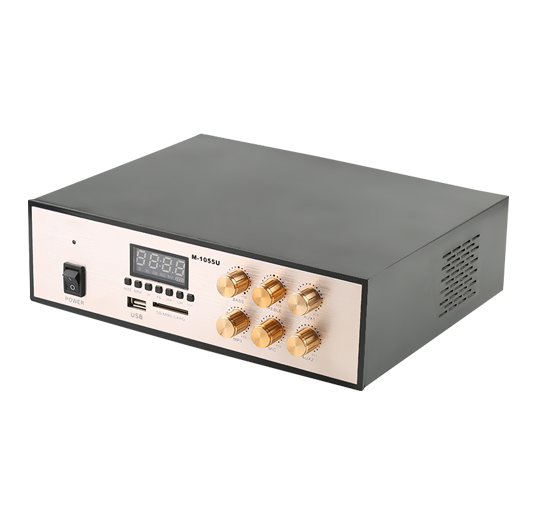Stereo amplifiers can typically drive multiple sets of speakers simultaneously, but there are some important considerations to keep in mind to ensure optimal performance and avoid damage to the amplifier or speakers.
Firstly, it's crucial to check the specifications and capabilities of your amplifier. Some stereo amplifiers are specifically designed to support multiple speaker setups, while others may not have the necessary power output or impedance handling to drive multiple sets of speakers effectively. Be sure to consult the amplifier's manual or documentation to determine its suitability for driving multiple speakers.
One common method for connecting multiple sets of speakers to a stereo amplifier is through parallel wiring. In parallel wiring, each speaker is connected directly to the amplifier's output terminals, effectively dividing the amplifier's power output among the connected speakers. However, this approach can present challenges in terms of impedance matching and power distribution.
Impedance matching is critical when connecting multiple speakers to an amplifier. If the combined impedance of the connected speakers is too low, it can overload the amplifier and cause overheating or damage. Conversely, if the combined impedance is too high, it can result in insufficient power delivery to the speakers, leading to decreased volume levels and potential distortion.
To avoid impedance mismatching, it's essential to calculate the total impedance of the connected speakers and ensure it falls within the amplifier's specified impedance range. Additionally, using impedance-matching devices such as speaker selectors or impedance-matching volume controls can help maintain proper impedance levels and ensure optimal performance.
Another consideration when driving multiple sets of speakers with a stereo amplifier is power distribution. In a parallel wiring setup, the amplifier's power output is divided among the connected speakers, which can affect the volume levels and overall sound quality of each speaker. Speakers placed closer to the amplifier may receive more power and produce louder sound levels compared to speakers located farther away.
To address this issue, you can use a speaker selector or impedance-matching volume control with built-in power distribution capabilities. These devices allow you to adjust the volume levels of individual speakers or groups of speakers independently, ensuring balanced sound distribution throughout the listening area.
While stereo amplifiers can drive multiple sets of speakers simultaneously, it's essential to consider factors such as impedance matching, power distribution, and the amplifier's capabilities to ensure optimal performance and prevent damage. By following proper wiring practices and using impedance-matching devices as needed, you can create a multi-speaker setup that delivers high-quality audio and an enjoyable listening experience.


